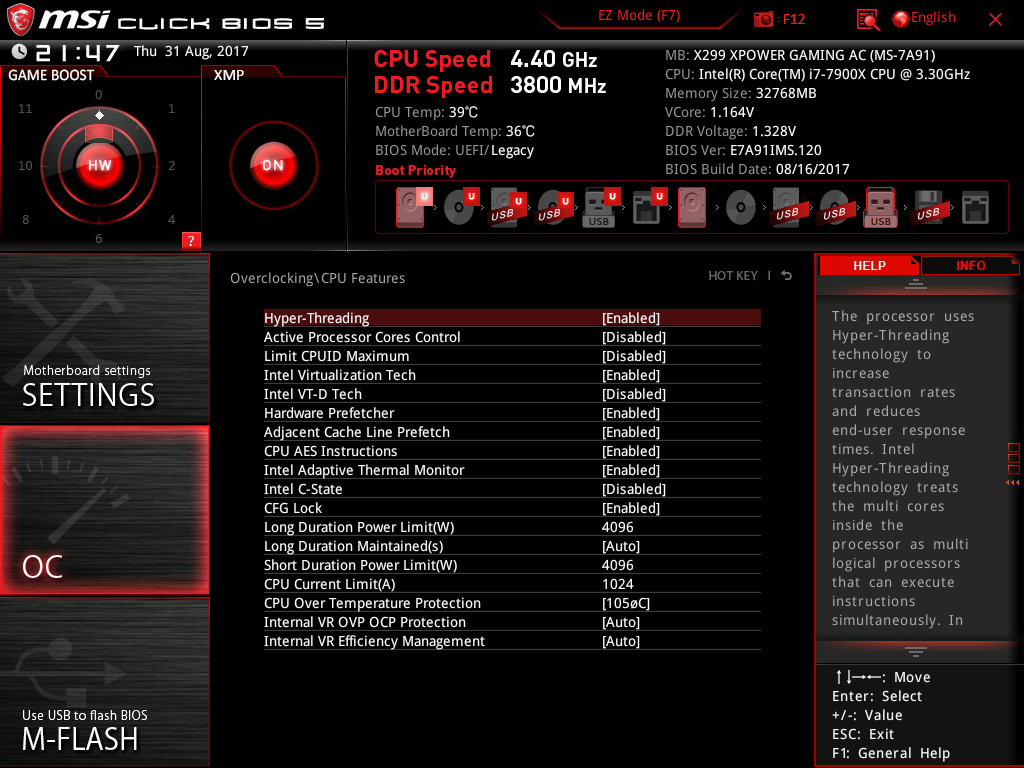MSI X299 XPower Gaming AC Motherboard Review
Why you can trust Tom's Hardware
Software & Firmware
MSI has made few changes to its software suite since we covered it in our X299 Gaming Pro Carbon AC review, but we did grab a few supplemental screenshots. MSI Mystic Light changed our LED colors to red and didn’t respond to custom color changes until we updated, after which it became unresponsive to most input (even flash patterns). We’ll wait for yet another update.


OC Mode of MSI’s Gaming App still references the motherboard’s first OC profile, which is still an underclock for our processor but at 3.8 GHz rather than the 3.5 GHz of the former test subject. Other shortcuts still refer to more useful apps as described in that review.
And now for the good news: MSI Command Center has been fully updated to work with X299 motherboards. We controlled CPU clocks and core voltage with ease. On the other hand, DRAM clocks are still stuck.



The “Game Boost” setting above can be set to hardware or software mode, accessing seven different factory-programed overclocks from firmware. Since it’s purely firmware controlled, changes require a reboot.


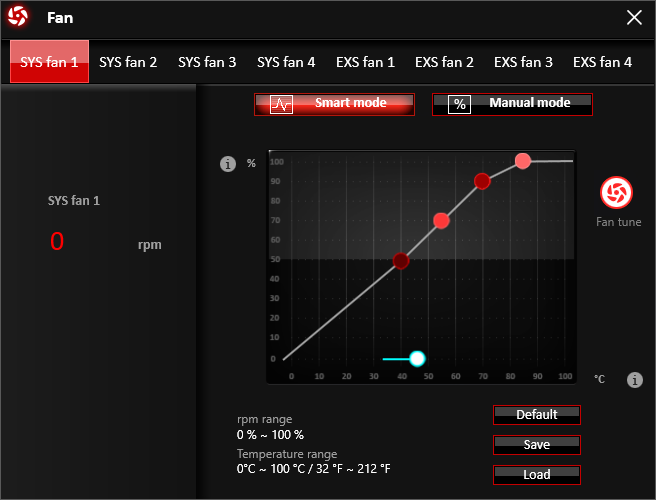


Applets launched from the Advanced key of Command Center include advanced voltage control, system fan settings, advanced DRAM timings, and a very useful temperature monitoring schematic. DRAM timing adjustments worked without crashing the program for the first time I can remember, though these firmware-based adjustments require reboot.
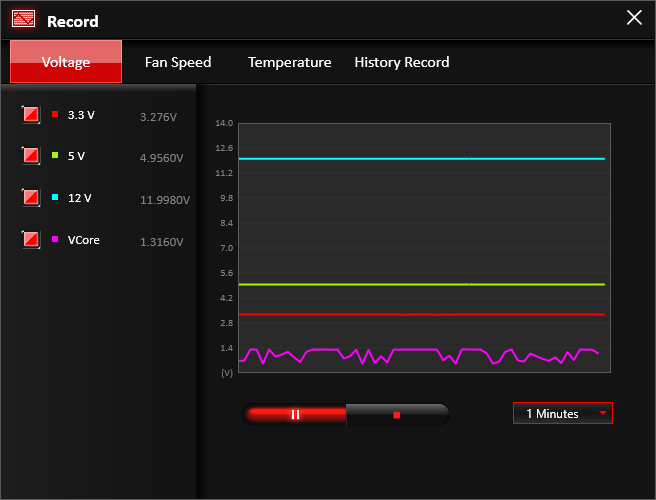


The “Settings” key of Command Center launches a system event recorder, an alarm settings menu, and mobile control for MSI’s Command Center smartphone app.

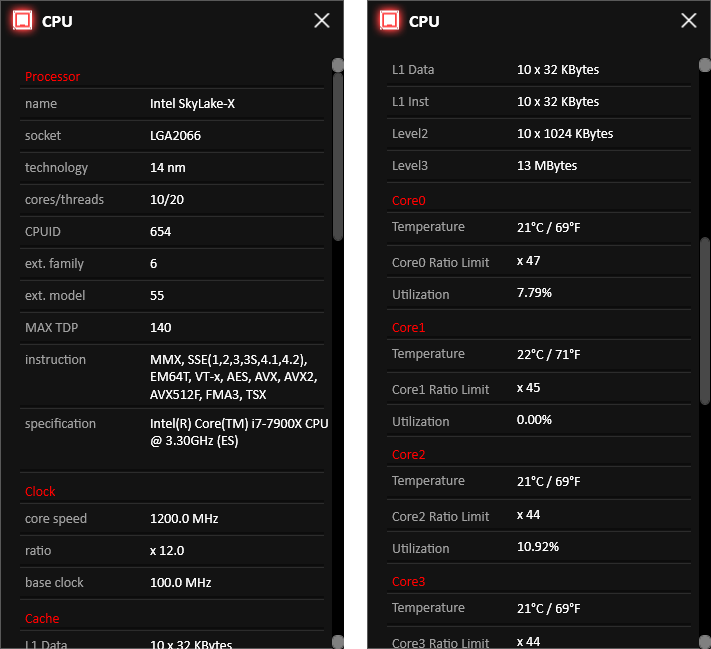
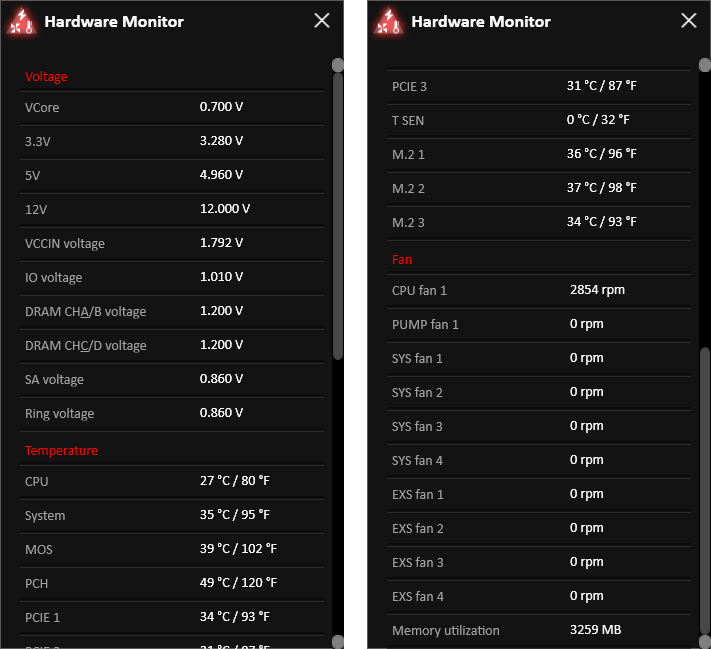
Command Center’s “Information” key links its Motherboard, Memory, and CPU info applets, along with detailed HW Monitor readings.
Get Tom's Hardware's best news and in-depth reviews, straight to your inbox.
X299 XPower Gaming AC Firmware
MSI Click BIOS 5 still opens to Easy mode by default, but now remembers the mode it exited from. That means if you press F7 to enter advanced mode, change a few things, save and exit, you’ll be greeted with Advanced mode the next time you enter UEFI.
The OC menu also opens into Expert mode by default. The Misc Setting drop-down includes Enhanced Turbo mode by default, and this must be disabled to benchmark using Intel’s default Turbo Boost ratios. That setting disappears when you manually select a multiplier.



Our CPU reached its expected 4.40 GHz clock at 1.15V, where substantially higher voltage levels that might have kept it stable at higher frequencies would have also allowed it to overheat under full load. DRAM voltage is only adjustable in 10mV increments: The 1.340V setting allowed measured voltage to exceed our 1.355V test limit, forcing us to choose 1.330V to achieve 1.348V as measured at the DIMM slot.


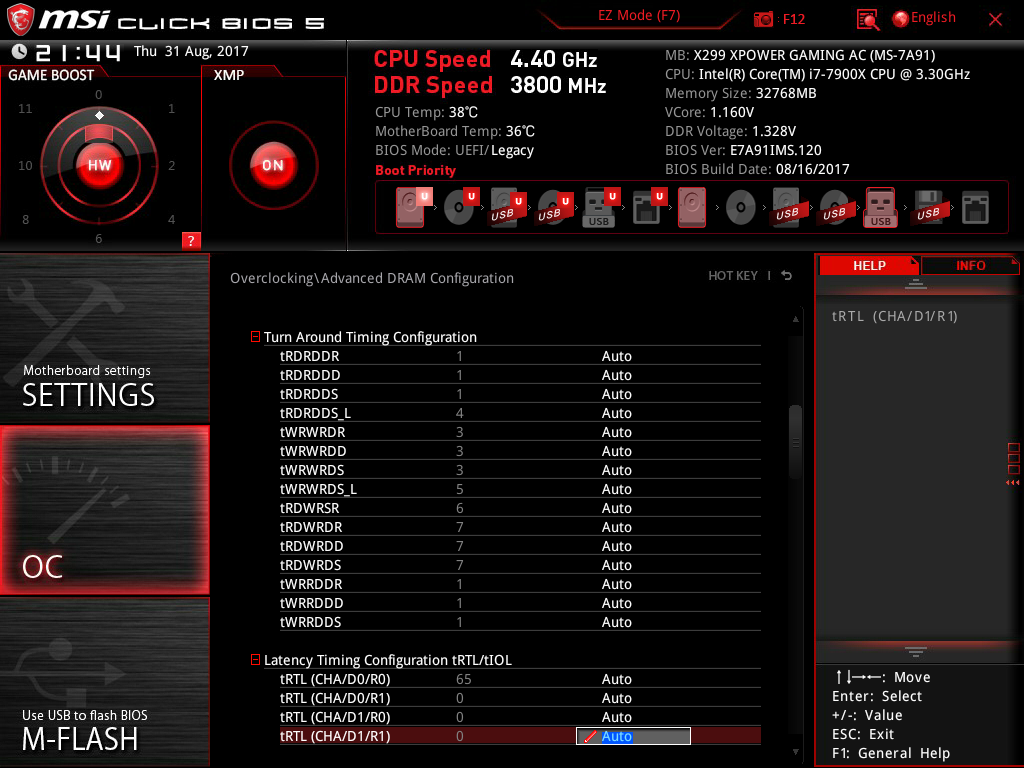



Memory timing adjustments are too numerous to write about, and can be set at once or split into separate A/B and C/D channel timings. The X299 XPower Gaming AC extracted DDR4-3838 from our DDR4-3866 set at XMP timings.
Since 4.40 GHz is within the standard range of our Core i9-7900X, the X299 XPower Gaming AC treated it that way and maintained certain power savings controls. The 45x multiplier brought us an unregulated 4.50 GHz, but the voltage required to maintain it caused our CPU to thermal throttle. Getting all cores to operate simultaneously at 4.40 GHz under an AVX load required setting the AVX offset to zero and setting the VCore Loadline Calibration control to “anything other than default,” whereupon we found Mode 3 to be closest to a level setting.



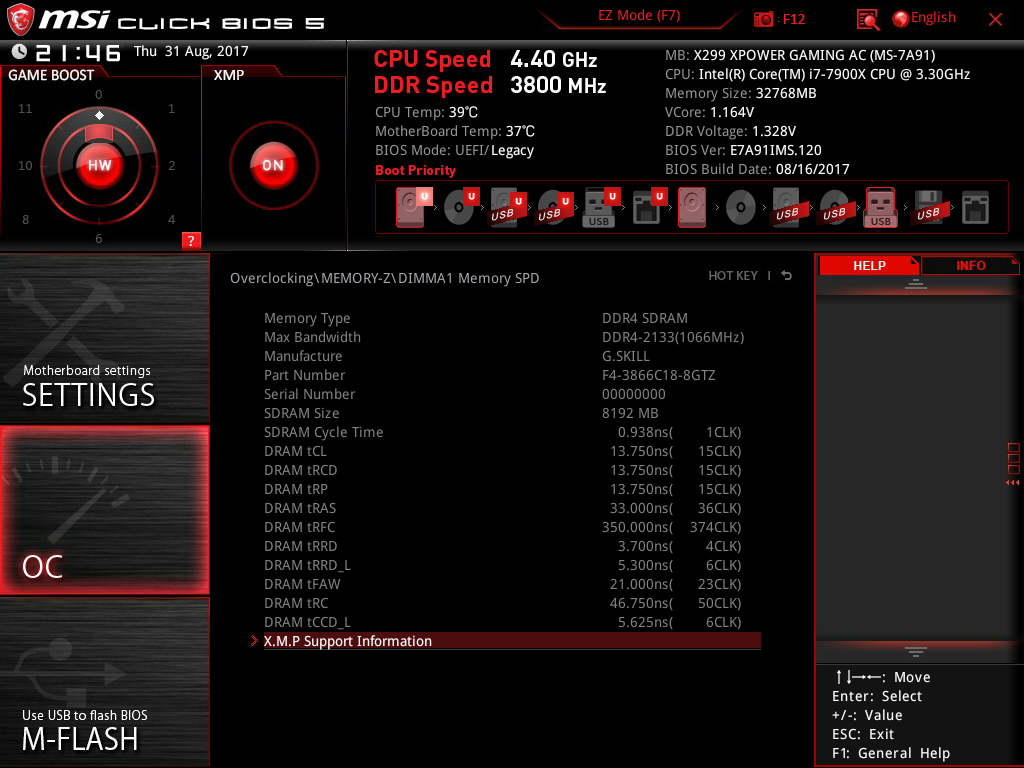

Additional submenus show CPU capabilities and DRAM timings.
The CPU Features menu doesn’t have very many power savings control settings. We enabled those for our performance and power evaluations, then disabled several prior to overclocking analysis.
The M-Flash button isn’t a menu, but a command to reboot into a special firmware-flashing GUI.
Six custom firmware configurations can be saved as overclocking profiles or exported to a file on a USB flash drive.
All 10 of the X299 XPower Gaming AC’s fan headers automatically detect whether or not a PWM-controlled device is attached, and all 10 can alternatively be configured manually between PWM and voltage-based speed control. Fan control profiles can be configured automatically, manually, or set to full speed.


MSI Board Explorer shows detected devices, but apparently isn’t able to detect whether USB or SATA devices are installed. It shows all internal ports occupied, though none were.
MORE: Best Motherboards
MORE: How To Choose A Motherboard
MORE: All Motherboard Content
-
Scott_123 With z370 due out in 3 days and cool new processors who will buy a x299 or z270 at this point in time? Add in the fact you can't boot ssd raid and have to buy the most expensive processor to get the most pcie lanes and this board makes no sense at all.Reply -
karma77police There is one problem with this board, for that money there should be 2x8 pin connectors. Only Gigabyte got it right with their 9 series.Reply -
Kenneth_72 I've seen many examples in the last several months where benchmarks, Firestrike etc, showed lower numbers but in actual games the hardware performed better.Reply
Opinion of the validity of these existing benchmarks to actual game performance. -
Crashman Reply
LOL, Z370 is Z270 rehashed. It makes no sense to scale back to dual channel and 16 CPU lanes if you really need 28 or 44 lanes or quad-channel.20231288 said:With z370 due out in 3 days and cool new processors who will buy a x299 or z270 at this point in time? Add in the fact you can't boot ssd raid and have to buy the most expensive processor to get the most pcie lanes and this board makes no sense at all.
The only people your analysis SHOULD make sense to are Kaby Lake X buyers, but we've already established that most of that market wasn't making sense anyway :)
-
Crashman Reply
X299 is paired with LGA 2011, an interface that supports 44 CPU PCIe lanes and four memory channels. Z370 is paired with LGA 1151, which has only 16 CPU PCIe lanes and two memory channels.20236444 said:???
So who would buy X299 after Z370 is out? Someone who needs more than 16 CPU lanes or more than two memory channels.
Kaby Lake X is a 16-lane processor that, when placed on an X299 platform, cripples half its features. It was always a bad idea for most users, but there are a few elite overclockers who love it just for overclocking.



